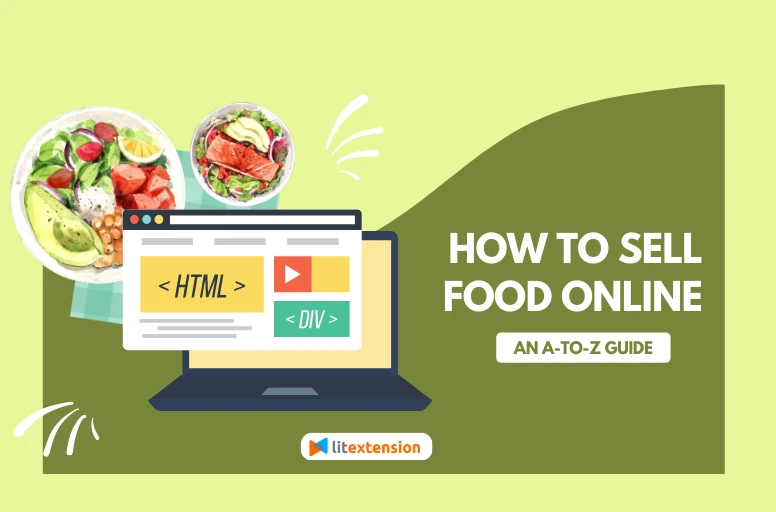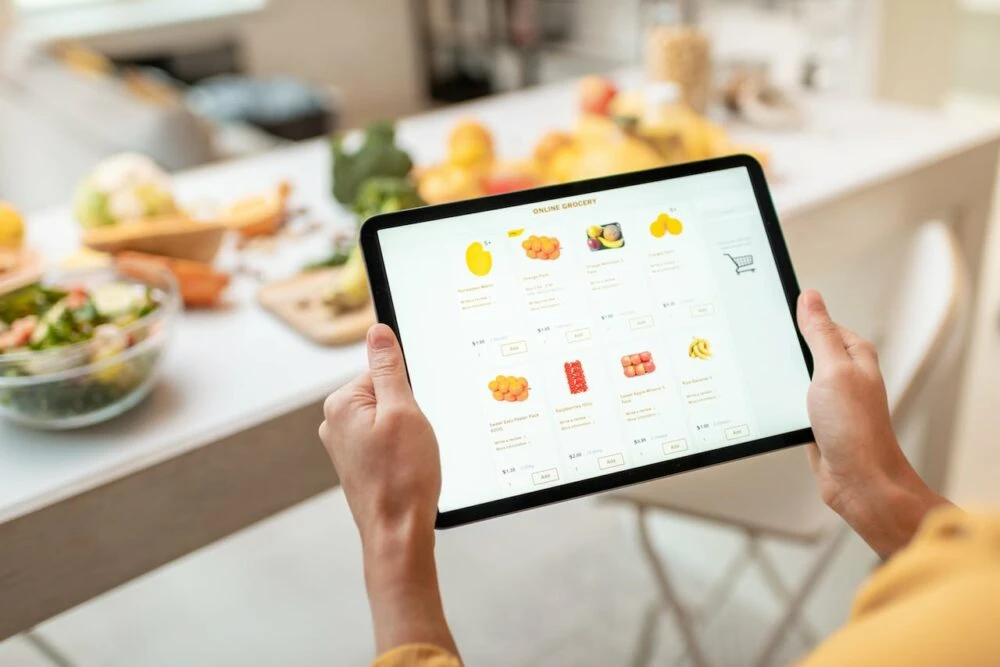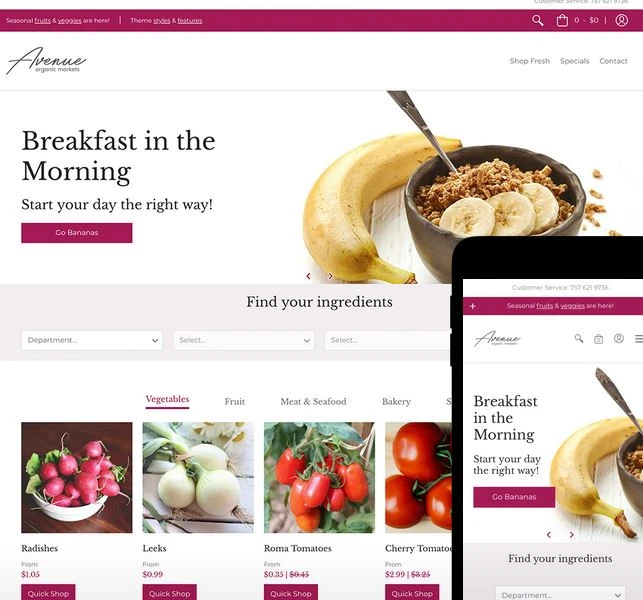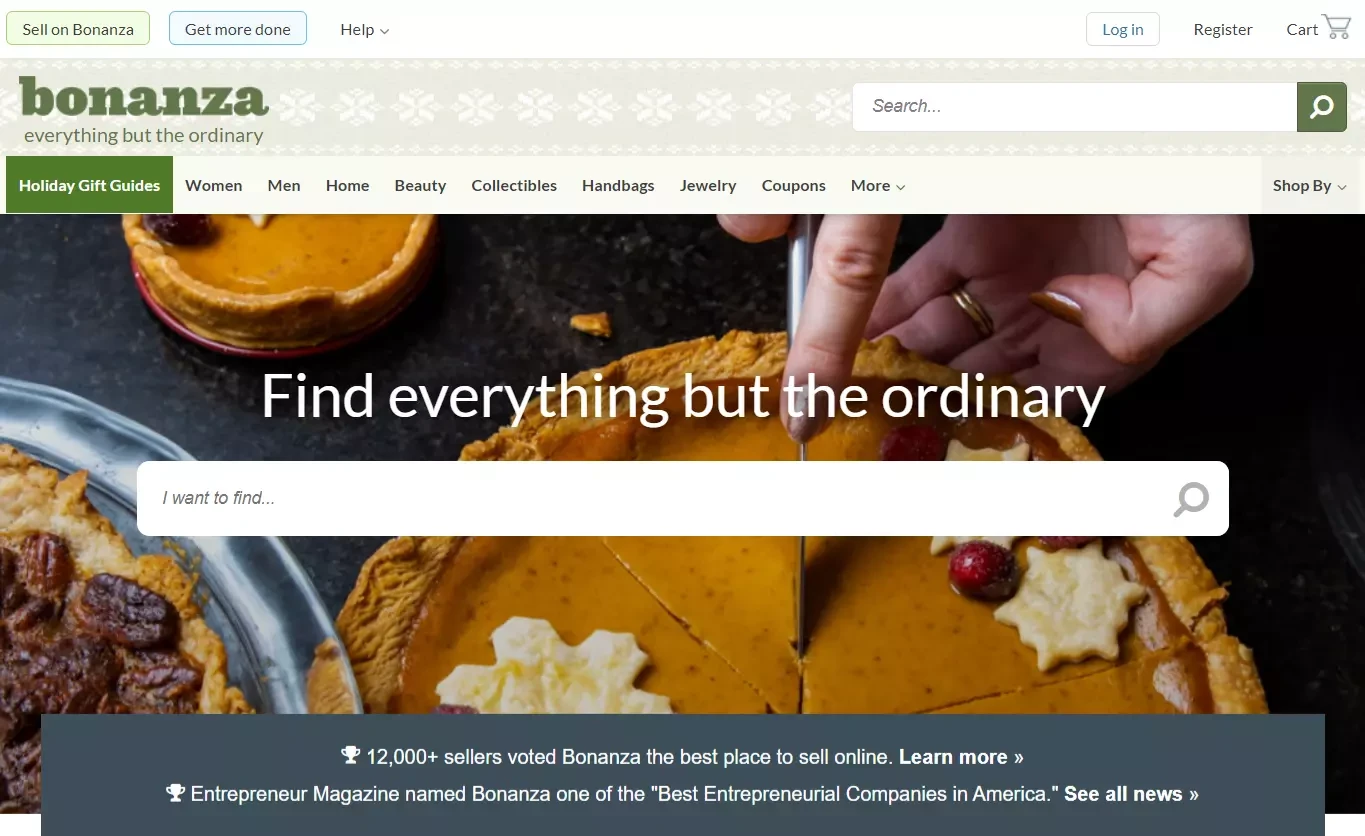Introduction
With the rise of eCommerce, it’s easier than ever for anyone to set up an online store and start to sell food online.
However, there are some important steps you’ll need to take to ensure your online food selling is successful. With the right strategies and tools, you can build a thriving online food business that reaches customers worldwide.
In this guide, LitExtension – #1 The World Shopping Cart Migration Expert will cover everything you need to know about opening a food business. If you’re new to online sales or want to ensure you won’t miss any major points, consider the following essential ones:
- 7 straightforward steps to set up an online food store.
- 3+ Best eCommerce platforms for online food selling.
Let’s jump right in, shall we?
How to Sell Food Online – An A to Z Guide

#1. Understand the food law
First essential step: Familiarize yourself with the regulations and laws involving selling food online in your area. This may include obtaining licenses and permits and meeting specific labeling and packaging requirements.
Permit for selling food can vary depending on the country or state you are operating in. Thus, it’s essential to check with the local health department to ensure you comply with all laws and regulations.
#2. Find the best food products to sell online

Then, research and identify your area’s most popular and in-demand food products to sell food online. Consider the cost, shelf life, and packaging of the products.
By doing market research and checking the below list, you can choose food products that will appeal to your target audience and be profitable for your business.
- Research the market
- Consider the cost
- Check the shelf life
- Think about packaging
Keep in mind the dietary restrictions: Many people have dietary restrictions, so consider offering gluten-free, vegan, or organic options to attract a broader customer base.
#3. Choose your suppliers
By selecting reputable and reliable suppliers, you can ensure that your products to sell food online are of high quality and meet your customers’ expectations, much like Progressive International, known for its innovative kitchen tools and gadgets, ensures the quality and uniqueness of its product line.
- Research suppliers
- Check for certifications
- Negotiate terms
Tips: The location can be a potential issue. If you are selling perishable goods, it’s important to have suppliers that are located close to you to reduce transit time and guarantee the freshness of your products.
#4. Create your online store

By creating attractive and user-friendly websites to sell food online, you can showcase your food products and make it easy for customers to find what they are looking for and make a purchase. As you can see, food advertising agencies can be incredibly valuable to businesses. With the help of their expertise clients are able to connect with their target demographic and reach them more effectively.
In this context, food advertising agencies can provide invaluable assistance. By tapping into their expertise, these agencies help businesses connect with their target audiences more effectively, maximizing reach and engagement with potential customers.
- Choose an eCommerce platform: There are several eCommerce platforms available, such as Shopify, BigCommerce, WooCommerce, and more. To determine where to sell food online, remember to choose one that best suits your needs and is accessible to you.
- Design and customize your store: Customize the look and feel of your store to match your brand and make it visually appealing. Make sure your store is easy to navigate and has a clean layout.
Best storefront designs that might inspire you:
- Add product information: Provide detailed descriptions and high-quality images of your food products to your online store. Make sure to clearly list the ingredients and any relevant information about the product, such as dietary restrictions, certifications, etc.
- Add payment and shipping options: Make sure your store has a secure payment gateway and various shipping options with professional invoices for your customers to choose from.
- Test your store: Before launching your store, test it thoroughly to make sure it is functioning properly and that there are no errors or bugs to sell food online.
#5. Work on pricing strategy

By developing a pricing strategy that considers your costs and competition, you can attract customers and make a profit to sell food online. Here are some of the tasks you need to take into account:
- Research your competition: Research the prices of similar food products being sold online by your competitors. This will give you an idea of the general price range for your products to sell food online.
- Consider your costs: Take into account all of the costs associated with producing, packaging, and shipping your food products. This includes the cost of ingredients, packaging materials, labor, and more.
- Determine your profit margin: Determine how much profit you want to make on each product. This will help you set a price that will cover your costs and still leave room for profit.
#6. Upload and publish your food products

Once your online store is set up and ready to go, it’s time to add your food products and make them available for purchase.
- Organize your products: Organize your products into categories and subcategories to make it easy for customers to find what they want.
- Add product information: Add detailed descriptions and high-quality images of your food products to sell food online. Make sure to clearly list the ingredients and any relevant information about the product, such as dietary restrictions, certifications, etc.
- Set up inventory management: Set up an inventory management system to keep track of the products you have in stock and to update your website when products are out of stock automatically.
- Test your products: Before publishing your products, test them thoroughly to ensure they are working as expected and that there are no errors or bugs.
- Publish your products: Once you have tested your products and are satisfied with their performance, publish and make them available for purchase to sell food online.
#7. Promote your online food business

Once your online store is up and running, it’s time to start promoting it to attract customers and increase sales. Promoting your online food business through various channels can attract customers, increase sales, and grow your business:
- Optimize your website for SEO to improve visibility and attract more customers. This can be done by incorporating keywords in the product descriptions, titles, adding meta and alt tags to images.
Want to get the most out of SEO eCommerce stores? Check out these articles now:
- Use social media platforms such as Facebook, Instagram, and Twitter: Share pictures of your products, post updates, and run promotions to sell food online.
- Run online ads on platforms such as Google, Facebook, and Instagram Ads: Use targeted advertising to reach potential customers who are most likely to be interested in your products.
- Use email marketing to promote and keep your customers informed about new products, promotions, and deals.
3 Best eCommerce Platforms to Sell Food Online
#1. Shopify

Shopify allows anybody to open an eCommerce site with a polished appearance without needing specialized training or experience.
Shopify also includes a suite of tools, such as SEO, social media, and an extensive number of app integration,... to assist business owners to sell food online. What’s more? Their 24/7 support service will always be there for your assistance!
Quick tips: Can’t quite commit to it just yet? Shopify offers a free trial for 3 days, so you may try it out before committing to any paid pricing plan!
Here are some of the highlighted features it provides:
- Food-Specific Themes: With 110+ themes and templates, you can quickly and easily set up a specialized online shop that looks and feels like your own.
- Simple inventory management: To keep tabs on inventories, the platform may alert merchants when ingredients/ stocks are running short.
Grasp more insights about the Shopify eCommerce platform with our honest review:
- Convenient integration: Shopify has a large app store, with many apps that can help you improve your online store and increase sales, like shipping and inventory management.
- Food delivery or pickup: Shopify has built-in functionality for food delivery and pickup.
- Multiple payment methods: Shopify integrates with various payment processors, such as Stripe, PayPal, and Square, allowing customers to purchase food products online securely.
Wondering how to utilize Shopify the most it? Discover tips and tricks from these articles:
#2. BigCommerce

Among the best eCommerce platforms for hosting an online store, BigCommerce is among the most well-known. Its many useful features and tools make it an excellent choice for restaurants and other food-related enterprises.
Features such as product administration, order fulfillment, online payments, analytics, etc. are all included in this comprehensive solution. It also offers professionally created themes that can be modified extensively. BigCommerce does a great job with security as well.
All that’s required is for you to sign up for it!
BigCommerce has some special features that are particularly useful for selling food online, such as:
- Subscription-based sales: Businesses that sell food on a recurrent basis can benefit from BigCommerce’s built-in functionality for selling subscription-based products.
- Perishable goods management: BigCommerce includes features like expiration dates and inventory tracking for food products with a limited shelf life.
- Food Safety Compliance: BigCommerce offers food safety compliance features such as HACCP and FDA 21 CFR Part 11 compliance to ensure food safety standards are met.
- No transaction fee
- Multi-language and -currency: Function will be helpful if you plan to extend your business to other countries.
- Gift card and gift wrapping: BigCommerce has built-in gift card and gift wrapping features, which can be useful for businesses that sell food items as gifts.
Discover if BigCommerce is the suitable eCommerce platform for your business before investing in its paid plan:
#3. WooCommerce

WooCommerce is a popular eCommerce plugin for the WordPress platform that provides a wide range of features for businesses of all sizes.
The platform is a free solution that helps vendors of edible goods build and run an online business. It’s perfect for restaurants and other food-related businesses that want complete control over their online presence.
Moreover, if you’re a food vendor interested in accepting subscriptions or recurring payments, or if you’d like to combine your store with other applications, WooCommerce is a fantastic choice!
You might also want to read:
Here are some ways WooCommerce can benefit food sellers:
- Customizable storefront and product pages: WooCommerce offers a library of customizable templates and themes that can be used to create a unique and professional-looking food store.
- Product variations: WooCommerce allows food sellers to offer different variations of products, such as different sizes, colors, and flavors of food items.
- Third-party integrations: It is highly customizable and offers a wide range of third-party integrations that can help food sellers streamline their operations and grow their sales.
Before deciding on the platform, why don’t we take some time to educate ourselves about this eCommerce platform with the following articles:
Others
Facebook Marketplace

Facebook Marketplace is a platform that allows users to buy and sell items within their local community. It can be a good option for small food businesses that want to reach a local audience.
Some benefits of using Facebook Marketplace for selling food include:
- Large audience
- Cost-effective
- Easy to use
- Local reach
- Integration with Facebook Business
However, there are some limitations to consider when using Facebook Marketplace to sell food products. As a third-party platform, you’ll have less control over how your products are presented and how customers interact with your business.
Moreover, it is designed for local sales. Thus, shipping options may be limited.
Etsy

An eCommerce platform that focuses on handmade, vintage, and unique goods – Etsy. It can be a good option for small food businesses that make unique or artisanal products.
One downside is that because Etsy is a popular platform, there may be a lot of competition among food sellers. Others than that, there are many benefits of using Etsy for selling food. This includes:
- Niche market
- Low startup costs
- Customizable storefront
- Built-in customer service
Bonanza

Bonanza is an eCommerce platform that allows businesses to sell a wide range of products, including food items. Some of the benefits of using Bonanza for selling food include:
- Low fees
- Easy to use
- Built-in shipping calculator
- Built-in customer service
- Integration with other platforms
However, some limitations are also to consider when using Bonanza to sell food products. Bonanza has a smaller audience than other eCommerce platforms like Amazon and Etsy.
Moreover, it doesn’t have as many integrations with other tools as other platforms like Shopify or BigCommerce.
How to Sell Food Online – FAQs
[sp_easyaccordion id=”49331″]
Final Words
And that brings us to the end of this step-by-step guide on how to sell food online.
In conclusion, selling food online can be a great way to reach a wider audience and expand your customer base.
It’s essential to have a well-designed website (for example, a Shopify or BigCommerce store), offer various options, and provide excellent customer service. Additionally, using high-quality ingredients and emphasizing the unique aspects of your food can help set your business apart.
Join our active eCommerce Facebook community if you want to connect with thousands of eCommerce gurus to gain more insights and obtain more eCommerce tips & tricks.